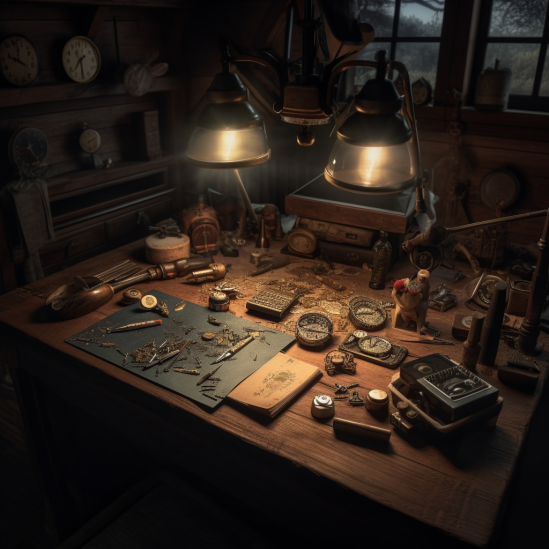An automatic watch is a mechanical piece that is made up of many moving parts. Below we have compiled a list of key watch parts to help you get to know your watch better.
Key Watch Parts
Mainspring: A coiled, tensioned spring that stores energy as it is wound. This tension is slowly released and this is what powers the movement of the watch.
Rotor: A weighted piece that spins freely with the motion of the wearer's wrist. The rotor is connect to the main spring and transfers energy to it.
Balance Wheel: A small wheel that oscillates back and forth to slowly release the energy from the mainspring to keep accurate time.
Escapement Mechanism: A piece that controls the release of energy from the balance wheel by controlling it in small equal parts to drive the watch's gears.
Gears: Small wheels with teeth that help transmit the energy from the escapement to the hands of the watch.
Crown: A small knob on the side of the watches case that is used to interact with the movement. It can be used to wind the watch or set the time.
Crown Guards: A raised protective structure that sits on either side of the crown to shield it from the accidental impact to reduce the risk of damaging it or changing the time. Often found on the case of dive watches.
Jewels: Small, hard, and smooth synthetic gemstones used as bearings in the watch movement to reduce friction and wear.
Dial: The watch face that is the canvas for displaying the time. Often has markers or numbers on it and hands.
Hands: Typically pointy stick shaped parts on the dial that rotate to show the time. Most watches have a hour hand, minute hand and second hand.
Markers: Indicators placed around the dial used to identify key times around the dial to assist with telling the time. Typically found at every hour around the dial and either small indicators or numbers.
Luminosity: A material that glows in the dark. Typically applied to the markers and hands to enable easy reading at night.
Sapphire Crystal: A scratch-resistant material used to protect the watches face. Highly durable making it the material of choice for most high end watches.
Case: The protective shell of the watch. Inside houses the movement.
Case back: The bottom cover on the case of the watch which protects and seals the watch's internal movement. Most common types are either a closed case back made of metal, or a display case back made of glass.
Bezel: A ring around the watches face that can be fixed or rotated. Dive watches have rotating bezels allowing the watch to be used for timing.
Lug: Sections of the watch case that protrude out to allow the watch head to be attached to the bracelet.
Bracelet: The metal band that goes around the wearers wrist to secure the watch.
Links: The individual pieces that make up the bracelet that can removed in sections to size to the wearers wrist.
Clasp: The piece that secures the bracelet to the wearers wrist.
Other Watch Terms
Power Reserve: The number of hours a watch can keep running without being worn.
BHP (Beats Per Hour): A measurement that represents the number of times the balance wheel oscillates in an hour. The higher the BHP, the more times the second hand 'ticks' per second.
Complications: Refers to an additional features the watch has beyond telling the time. Common complications include a date display, chronographs, etc.
Accuracy: A measurement given to a watch to identify how well it keeps time.
Water Resistance: A measurement given to a watch to identify how much water it can whistand without being damaged. Usually given in meters to atmospheres.


